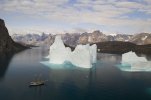Last edited:
You are using an out of date browser. It may not display this or other websites correctly.
You should upgrade or use an alternative browser.
You should upgrade or use an alternative browser.
Why I NEVER use ND Filters With Drone Cameras
- Thread starter herein2021
- Start date
Ken Ramsley
Well-Known Member
- Joined
- Nov 13, 2018
- Messages
- 57
- Reaction score
- 48
- Age
- 71
I respect the artistic choices of every video-maker, and if ND filters let someone reach their artistic goals, I see no reason to quibble. There is no right or wrong here.
Speaking as an EVO-1 pilot... In theory, a fairly fast fixed-aperture lens might be an over-exposure candidate (I'm still looking for a definitive statement from Autel about a 'fixed' versus 'variable' aperture EVO-1 camera). All the same, without ND filters, the camera handles the brightest 'zebra' lighting situations with simple instructions, and I have never produced a single over-exposed video clip.
Apart from technical hair-splitting, using ND filters comes down to video-recording style and personal preferences...
I personally do not use ND filters because I strongly prefer short-exposure video frames, crystal-clear high-frame-rate, no cinematic blur, and nice sharp frames I can clip as stills ...video images of the real world that look like the real world. On this basis (no interest in a low-frame-rate dreamy/blurry 1930s cinematic look), I've never had a lighting situation where an ND filter would have helped.
But to repeat my overall opinion regarding ND filters... there is no right or wrong here.
Speaking as an EVO-1 pilot... In theory, a fairly fast fixed-aperture lens might be an over-exposure candidate (I'm still looking for a definitive statement from Autel about a 'fixed' versus 'variable' aperture EVO-1 camera). All the same, without ND filters, the camera handles the brightest 'zebra' lighting situations with simple instructions, and I have never produced a single over-exposed video clip.
Apart from technical hair-splitting, using ND filters comes down to video-recording style and personal preferences...
I personally do not use ND filters because I strongly prefer short-exposure video frames, crystal-clear high-frame-rate, no cinematic blur, and nice sharp frames I can clip as stills ...video images of the real world that look like the real world. On this basis (no interest in a low-frame-rate dreamy/blurry 1930s cinematic look), I've never had a lighting situation where an ND filter would have helped.
But to repeat my overall opinion regarding ND filters... there is no right or wrong here.
Eagle928
Well-Known Member
- Joined
- Feb 3, 2021
- Messages
- 707
- Reaction score
- 468
Nice photo. I'm using it as my PC wallpaper for a while. I do this with exceptional pictures I see online.What about ND/Polarized? When I was in Greenland with my drone, my shots would have been useless without one. Icebergs glaring like sun. Blinding light conditions. At the time I had my mavic 2 pro. And anything above F2.8 is also annoyingly soft with that drone. So wide open was my only option.View attachment 9942
There are just too many bad bullet posts here so I'll just say - I'm a professional photographer - more motion picture than stills but many stills as well - for 45 years. I read this toxic post and hope that there are more people than not here that will study the problems with fast shutter speeds when shooting with out of focus foregrounds (FG) as it pertains to video that will be incorporate with feature work, i.e. narrative, promos or even docs. The main issue w/o using an ND is strobing and, as mentioned, in some circumstances, deep focus.. Not the night-time strobing of out of sync street lights, etc, but fast shutter speed issues that are seen with a nominal speed BG and a fast speed FG.
Of course, the assumption that the 'hater of NDs' makes is that all shots with a drone are far-away from the subject. If they only shoot in that realm then, yes, they are good with a much too small aperture (lens quality, for the most part, break up after 2 stops open from max aperture). The ridiculous example of a 2D image (railroad tracks from above!), well, as I reference, can be shot at any of the exposure triangle parameters (shutter speed/ISO/f-stop), but move the camera along that plane and you will see an unaccep[table amount of strobing at a shorter shutter speed (anything above 1/60 depending on the distance away from subject).
While I certainly respect your 45yrs of experience in the industry and I won't hesitate to state that number far exceeds mine, some of the points you are making actually make no sense. I will completely skip the parts that were off topic and had no relevance to the facts (which were most of them) and lets get to the technicals shall we?
According to your logic the following Hollywood feature length films should be a strobing mess:
- Saving Private Ryan
- Gladiator
- Mad Max: Fury Road
- Avatar
- The list goes on
These should also be a strobing mess as well:
- The Super Bowl
- Red Bull Action Sports
- NASCAR
- Boxing
- The Olympics
- Pretty much any modern film with action scenes
I started out not using ND filters with drones mainly because they were too heavy for the gimbals at the time......7yrs later I still don't use them because I discovered I don't need them......very simple concept really. My approach is to simply shoot video with the higher shutter speed (and no I've never encountered strobing problems by doing so no matter what the foreground or background relationship is) and what I like is that in post processing I can leave the scene the way it is or I can add motion blur. This lets me eliminate ND filters and use software to replicate the motion blur of an ND filter if I choose, without any of the issues ND filters can cause. So I can stick with hyper realistic or I can add so much motion blur its a blurry mess.
This is by far the most uninformed example of DOF. I mean, shooting STRAIGHT DOWN to a flat subject!!??? You must think people are pretty dumb.
You clearly missed the point here...this was not a DOF comparison this was a lens diffraction comparison....completely different type of comparison. But I'll further clarify since you didn't get it....this was to see if it was apparent to the viewer which images had the most lens diffraction. Lens diffraction has nothing to do with DOF. Honestly a statement like that does tend to call into question your 45yrs of industry experience but I'll chalk it up to you misreading the historical context.
What about ND/Polarized? When I was in Greenland with my drone, my shots would have been useless without one. Icebergs glaring like sun. Blinding light conditions. At the time I had my mavic 2 pro. And anything above F2.8 is also annoyingly soft with that drone. So wide open was my only option.View attachment 9942
Awesome picture and yes, I do think CPLs (Circular Polarizer Lenses) do have some value but they are too hit or miss to be reliable in my opinion. To achieve their full strength they have to be 90 degrees to the sun so it can be difficult to predict how effective one is going to be while the drone is on the ground.
Last edited:
Great eye test, ha! Subjectively I liked #4 the least. Maybe it's just because it had a slightly bluer cast than the others, or perhaps something else on a subconscious level? Can you reveal what the settings were on each of these? Thanks!
Sure no problem, below are what they were shot at.
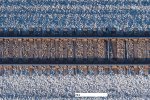
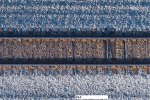
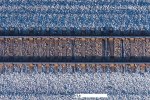
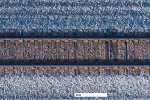
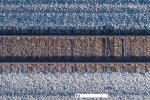
I respect the artistic choices of every video-maker, and if ND filters let someone reach their artistic goals, I see no reason to quibble. There is no right or wrong here.
Speaking as an EVO-1 pilot... In theory, a fairly fast fixed-aperture lens might be an over-exposure candidate (I'm still looking for a definitive statement from Autel about a 'fixed' versus 'variable' aperture EVO-1 camera). All the same, without ND filters, the camera handles the brightest 'zebra' lighting situations with simple instructions, and I have never produced a single over-exposed video clip.
Apart from technical hair-splitting, using ND filters comes down to video-recording style and personal preferences...
I personally do not use ND filters because I strongly prefer short-exposure video frames, crystal-clear high-frame-rate, no cinematic blur, and nice sharp frames I can clip as stills ...video images of the real world that look like the real world. On this basis (no interest in a low-frame-rate dreamy/blurry 1930s cinematic look), I've never had a lighting situation where an ND filter would have helped.
But to repeat my overall opinion regarding ND filters... there is no right or wrong here.
I agree 100%...there is no right or wrong here. The problem I have is the Internet is flooded with reasons why everyone must use an ND filter with their drone (especially when shooting video) and I haven't seen pretty much any posts stating that it is possible to obtain perfectly good footage without one.
A lot of the reasons on the Internet and posted on this thread have trickled down from Hollywood film limitation days vs. users performing their own tests and reaching their own conclusions; what's ironic is even modern day Hollywood and pretty much any fast action sports venue deliberately shoots video with faster shutter speeds specifically to reduce motion blur yet most users don't hear that side of the story. The first thing I do with my regular cameras if I am filming something like a car or boat race is crank my shutter speed up to 1/320s to reduce motion blur; for photography I go up over 1/600s at a minimum.
There certainly are legitimate use cases where an ND filter is needed like if for some reason you have to shoot with a wide open aperture in bright daylight, but I personally have never encountered those situations when it comes to drone video or photography.
Rubik3x
Well-Known Member
Interesting discussion but I am disappointed when people start publicly degrading others for their opinions. So, back on topic:
- I only use the ND16 in bright sun, otherwise, only stock UV lens. KISS.
- ND filters for the EVO II Pro are about the same weight as the stock UV lens. So no added load on gimbal.
- The E2P front lens (whether UV or ND) is very exposed to the sun. Glare when facing towards the sun can cause distracting ghost images on otherwise great shots. I have suggested to several E2P ND filter manufacturers that they figure out a way to add a sun shield to their products. I have used home-made sun shields successfully on drone cameras. No issues with gimbal motors (yet).
- Also, shadows from the props on the face of the lens can be a problem at higher shutter speeds. ND filters help prevent this.
- If your goal is to take still photos, or to pull still frames from video, don't use ND filters. You want the high shutter speed to freeze the images in the frames.
UasDriver
Well-Known Member
- Joined
- Nov 12, 2020
- Messages
- 305
- Reaction score
- 156
- Age
- 103
anyone know the "math" when you pull a still? when I do it, they don't seem as sharp, as clear, like comparing a 1MP to a 20Mp image sorta thingor to pull still frames from video,
Rubik3x
Well-Known Member
I'll take a swing at that. Bear in mind that video resolution is lower that photo resolution (3840x2160 vs. 5472x3648). So, if you used a fast shutter speed, and the drone was relatively still, and low ISO, you should get a nice photo from your video but it won't match the image sharpness in Photo mode.anyone know the "math" when you pull a still? when I do it, they don't seem as sharp, as clear, like comparing a 1MP to a 20Mp image sorta thing
Here's an example of a photo pulled from video (Yuneec Typhoon H CGO3+ camera) with 83k views and over 800 downloads:

Photo by Ken Theimer on Unsplash
Taken in July using unmanned aerial camera system near Chinook Pass (just outside the National Park). – Download this photo by Ken Theimer on Unsplash
UasDriver
Well-Known Member
- Joined
- Nov 12, 2020
- Messages
- 305
- Reaction score
- 156
- Age
- 103
that's the comparison I was wondering about, thanksresolution (3840x2160 vs. 5472x3648).
anyone know the "math" when you pull a still? when I do it, they don't seem as sharp, as clear, like comparing a 1MP to a 20Mp image sorta thing
I never pull stills from videos but you will have a higher chance of success the higher resolution the source video is and the higher the frame rate. The reasons you will never get the same clarity and quality as shooting a native still is below.
Keep in mind this does not mean you can't get great images by pulling stills from video; it simply means you will not get the absolute highest quality the camera can produce by doing so. I always remind people that the typical video and image is viewed on a tiny cell phone screen for 3 seconds before the viewer swipes next. 1.5MP images would be plenty sufficient for such a scenario. Unless you are making wall sized prints, building sized murals, or fine art gallery submissions; whatever camera you have in your hands will be plenty sufficient. Chasing the technique is far more important than chasing the technology.
- Shutter Speed - This was already mentioned but I thought it was worth a mention again. Typically video is shot at a lower shutter speed vs. a photographic image so motion blur is higher which will make the still appear less sharp...the key word here is "typically", if you choose to shoot at a higher shutter speed then this is not an issue
- Bit Depth - A RAW still is typically a 14bit image, that is a lot more color data than a JPG frame grab from a video which already has all of the exposure and color data baked in and all of the remaining data thrown away during the compression process.
- Color Profile - When shooting video you have to select a color profile. Color profiles bake in certain stylistic choices such as saturation, tint, contrast, WB, log curve, etc. The video color profile might work great for video but terrible for photography. For example, ALOG is a great video color profile if you plan to post process it later, but if you want to pull stills from it it is a terrible choice because the resulting JPG will be very flat with little you can do to improve it.
- Video Resolution - If you shoot at the highest bit depth / video resolution combination for the EVO II (4K30FPS 10bit 4:2:0) your still image grab will only be 3840x2160 (4K) vs the full potential of the sensor which is 5472 x 3648 (20MP). However if you shoot at 6K (5472 x 3076) video you will get higher resolution stills which are very close to 5472 x 3648 (20MP) the full sensor resolution, but the tradeoff is that now you must shoot 8bit video.
- Drone Motion - To make a video interesting you need motion.....for photography the opposite is usually true. So if you are flying along filming video the craft is going to be less stable than stopping and holding the drone perfectly still to take an image. This slight increase in movement is desirable in video but not so desirable in photography and translates into slightly less sharp images (if you are going for the absolutely tack sharp image look).
For me personally it goes beyond that; if I am shooting a drone image I want to evaluate the composition, the leading lines, the exposure, the composition ratios, etc. and really take my time with the shot; all considerations that are drastically different from what I look for when I am shooting video.
Last edited:
Rubik3x
Well-Known Member
Ah yes, color bit depth. You can get 10-bit color video only if you shoot 4K/30fps with H.265 codec and LOG or HDR color. That makes a big difference to eliminate color banding for scenes with clear blue sky or smooth water or smooth beaches. I have not been satisfied with HDR option. As herein2021 said, shooting 6K (actually 5.5K) video gets more pixels but only 8-bit colors.
- Bit Depth - A RAW still is typically a 14bit image, that is a lot more color data than a JPG frame grab from a video which already has all of the exposure and color data baked in and all of the remaining data thrown away during the compression process.
I agree that the default sharpness correction is too aggressive. In the Style settings, I turn sharpness down to -2. With LOG color, I turn saturation and contrast up to +2 or +3. That minimizes the work in post. Oh yes, don't forget to set white balance. 5600K works for me on bright sunny days.
Last edited:
tvwxman
Well-Known Member
- Joined
- Jul 23, 2020
- Messages
- 139
- Reaction score
- 138
- Age
- 64
Ugh! And I've been mainly shooting at F2.8...Sure no problem, below are what they were shot at.
View attachment 9953View attachment 9954View attachment 9955View attachment 9952View attachment 9956
I agree 100%...there is no right or wrong here. The problem I have is the Internet is flooded with reasons why everyone must use an ND filter with their drone (especially when shooting video) and I haven't seen pretty much any posts stating that it is possible to obtain perfectly good footage without one.
A lot of the reasons on the Internet and posted on this thread have trickled down from Hollywood film limitation days vs. users performing their own tests and reaching their own conclusions; what's ironic is even modern day Hollywood and pretty much any fast action sports venue deliberately shoots video with faster shutter speeds specifically to reduce motion blur yet most users don't hear that side of the story. The first thing I do with my regular cameras if I am filming something like a car or boat race is crank my shutter speed up to 1/320s to reduce motion blur; for photography I go up over 1/600s at a minimum.
There certainly are legitimate use cases where an ND filter is needed like if for some reason you have to shoot with a wide open aperture in bright daylight, but I personally have never encountered those situations when it comes to drone video or photography.
Ugh! And I've been mainly shooting at F2.8...
I recommend every user (if they care about such things) perform their own tests and reach their own conclusions. Two EVO II 6Ks side by side could still have different apertures where their lenses are the sharpest due to slight manufacturing differences. I like F11 for video, F6.3 for images with my particular EVO II 6K.
robertmarcos
Member
- Joined
- Jan 17, 2021
- Messages
- 15
- Reaction score
- 10
- Age
- 66
Thanks for your highly-detailed reasoning. I ended up at the same conclusion but in a much different way... the freewell ND filter I was using absolutely wrecked the color balance of my videos!I see a lot of posts regarding ND filters for people's drone cameras and each time I ask myself why; why are people buying ND filters for their drone cameras, risking their gimbal motors, potentially damaging their camera lens, etc. etc. for an almost imperceptible amount of additional motion blur if any at all. I have never used an ND filter on any drone that I have owned and I have worked hundreds of projects for paying customers over the years; not a single one has said my footage doesn't have the proper motion blur or asked for a reshoot or a refund because they could tell I didn't have an ND filter on my drone. Sure, if you are shooting the next Hollywood blockbuster and using hexacopters to lift $100K worth of cinema cameras into the air then an ND filter just makes sense.....but for Youtube, Instagram, Vimeo; where your video will probably most commonly be viewed at 320P on a 5" cell phone screen? It makes no sense at all to me.
I know a lot of people use ND filters with their drone cameras but in my opinion I think a lot of people use them just because they have read somewhere that they are supposed to use them based on the 180 degree shutter angle rule (i.e. shutter speed "should" be 2x the frame rate). But if you study the reasons why that rule came about you may reach the same conclusion that I did; which is that it doesn't make sense for drone footage.
The shutter angle/shutter speed rule is meant to reduce or eliminate flicker in certain scenarios such as at night under street lights. Well when you think about it how often is a drone in that situation? The rule is also meant to ensure that there is the "proper" amount of motion blur during fast camera movements; once again, how often is a drone close enough to an object for it to matter? So what about fast moving objects other than the drone.....once again, how often is the drone close enough to that object for the motion blur difference to really be noticeable? And if you still want that barely noticeable motion blur that you feel like you are missing...it takes seconds to add it from within your NLE as you are editing the video.
So if there's not much benefit to using ND filters on drones are there any downsides? Sure there are:
So after looking at all of the pros and cons I personally just ignore the shutter angle / shutter speed rules and increase my shutter speed as needed to properly expose the scene. With a drone like the EVO II 6K at F11 ISO 100 I can practically point it at the sun and still not be much over 1/200s.
- Another Lens - ND filters are another lens between the camera and the scene which means its another thing that can get smudged, dirty or dusty, and can affect the incoming quality of light
- Image Degradation - Cheap ND filters can add a color cast, corner softness, chromatic aberration, and other problems to the image the camera records. Even the most expensive ND filters out there tend to add a slightly green cast.
- Gimbal Motor Burnout - This was the main reason I chose not to use ND filters years ago. Back then they were heavy and not designed for drones. People were reporting their gimbal motors burning out trying to support the additional weight of the ND filter on the front of the camera. What may feel nearly weightless to humans is still an additional load on the gimbal motor that was not accounted for in the original design of the drone's gimbal motors.
- Cost - ND filter sets for drones are not cheap, they are easy to break and to lose and offer marginal if any benefit to the actual footage. Drones have a very limited lifespan (the avg is 3yrs), so almost every accessory that you buy for one is wasted if you crash it or get a new drone.
- Setup Time - They add to the drone setup time. You have to figure out the proper ND filter based on the current ambient lighting situation and there's always the chance it could change drastically while you are in the air (i.e. the sun goes behind heavy cloud cover or you fly beneath tree cover).
- Camera Modification - If the ND filter has to replace the UV filter you are breaking the original factory sealed filter which will increase the chances of getting dirt, moisture, and other undesirables behind the lens. The better solutions slip over the UV filter....but then there's the weight problem.
Another thing people then frequently say is..."but they've seen xyz's footage on YouTube and it looks like it is stuttering....if the YouTuber had ND filters and had properly followed the 180 degree shutter angle rule their footage would not have stuttered and been choppy". This is another common misconception; the shutter speed does not make the footage stutter, the typical cause of stuttering YouTube footage is due to whoever shot the footage incorrectly conforming the footage in post to the timeline framerate they intended to render to. Many times people shoot at 60FPS then try to export the timeline to 24FPS.....without properly configuring their NLE to account for the fact that 24FPS is not 50% of 60FPS which brings me to my next point which is that I don't understand why people shoot in 24FPS....but that's another topic/rant for a different day.
My simple advice to get the best footage out of these drones in bright daylight; shoot at 60FPS or 30FPS, use a 30FPS timeline (29.97FPS), render your footage at 30FPS (29.97FPS), push the F stop to F11 and keep the ISO at 100, then use whatever shutter speed is needed to properly expose the footage and leave the ND filters to the regular cameras or the Hollywood blockbusters. BTW, I have absolutely nothing against ND filters themselves, I use them nearly daily with all of my other cameras to control the shutter speed either for video or for photography; its just that when it comes to drones I can't think of a single use case where they would provide any value whatsoever.
Thanks for your highly-detailed reasoning. I ended up at the same conclusion but in a much different way... the freewell ND filter I was using absolutely wrecked the color balance of my videos!
Yes that's number 2 in my list for why I don't use them (Image Degradation)...ND filters are known to add a color cast to the footage. A color cast is just the start; they can also introduce Infrared light issues, lens flare that reduces contrast or shifts the color spectrum, vignetting...the list goes on. Even the expensive ND filters for regular cameras are known to add a slight green cast to the footage. All you really need is the exposure triangle for 99% of the situations a drone camera will be used for.
Here is an example of a still pulled from a 4k video from my Evo 1.
Here is an example of a still pulled from a 4k video from my Evo 1.
That's definitely a nice shot especially that train; we don't have any older ones like that here. Stills from video are certainly possible, and nothing wrong with them if you are just shooting for yourself or social media. You can even pull a still from video while recording the video with the EVO II simply by pressing the shutter button while recording video; not sure if this is possible with the EVO 1.
Rubik3x
Well-Known Member
So, I did a simple test with and without ND16 filter on a sunny day. Both videos were 4K/30, ISO=100, LOG, H.265. With ND16 filter, I shot at 1/60s. With clear lens cover, I shot at 1/1250s. The shots involved rapid forward or backward movement, panning and manual point-of-interest rotation. To my surprise, the high shutter speed video looked as good as the ND16 video. No stuttering or strobe effect. Very sharp freeze frames. Only some slight flickering when moving fast while close to the tall grass on the ground that didn't appear in the ND16 filter shot. So, herein2021 was right, you don't NEED an ND filter to get good video on a sunny day! You may have other reasons to WANT the ND filter, such as for adding motion blur.
So, I did a simple test with and without ND16 filter on a sunny day. Both videos were 4K/30, ISO=100, LOG, H.265. With ND16 filter, I shot at 1/60s. With clear lens cover, I shot at 1/1250s. The shots involved rapid forward or backward movement, panning and manual point-of-interest rotation. To my surprise, the high shutter speed video looked as good as the ND16 video. No stuttering or strobe effect. Very sharp freeze frames. Only some slight flickering when moving fast while close to the tall grass on the ground that didn't appear in the ND16 filter shot. So, herein2021 was right, you don't NEED an ND filter to get good video on a sunny day! You may have other reasons to WANT the ND filter, such as for adding motion blur.
The flickering was probably caused by the props intersecting the light from the sun. It probably would have been there in the ND filter footage as well if you had flown at the exact same camera angle and tilt angle to the sun. In all of my hears of filming; I've never seen a high shutter speed cause flickering with drone footage unless an artificial light source was involved (i.e. LED lights) and in those cases its dark enough that you are probably shooting 1:1 shutter speed to framerate anyway.
I have however had the flickering problem many times with drones in direct sunlight which is caused by the props; it kind of looks like static, light flickering, or very pronounced flickering depending on how much of the blades intersect the direct sunlight. There is no real solution except point the camera down or change the relationship between the sunlight and the camera lens. A slower shutter speed may make it less pronounced since it will be more blurry, but it will still be there and could definitely ruin the footage.
I had to use ND filters to keep the damn props out of my videos. I would have too shoot at 1/60 or 1/120 the props would be blended in so you wouldn't really notice them. This was on the EVO 1 which was a horrible design. And no I'm not tilting the camera down -10 degrees.
That is a creative way to use an ND filter. Fortunately with the EVO II this isn't an issue. With some of the DJI drones this still happens; so yes my fix for that was to simply tilt the camera down until the props disappeared. For photography since the drone is motionless the props were never a problem.
I have noticed even with the EVO II, if it is fighting a strong enough headwind the props will start to appear in the shot; for those situations I still simply point the camera down more. For commercially viable footage there's no way I will let the props end up in the client's footage even if it is mostly blurred out by a slower shutter speed.
Similar threads
- Replies
- 0
- Views
- 523
- Replies
- 1
- Views
- 746
Latest threads
-
-
-
Onocoy NTRIP. Has anyone tried this set up for RTK drone survey (photo mosaic and 3D capture and generation).
- Started by HorusQcopter
- Replies: 0
-
-


